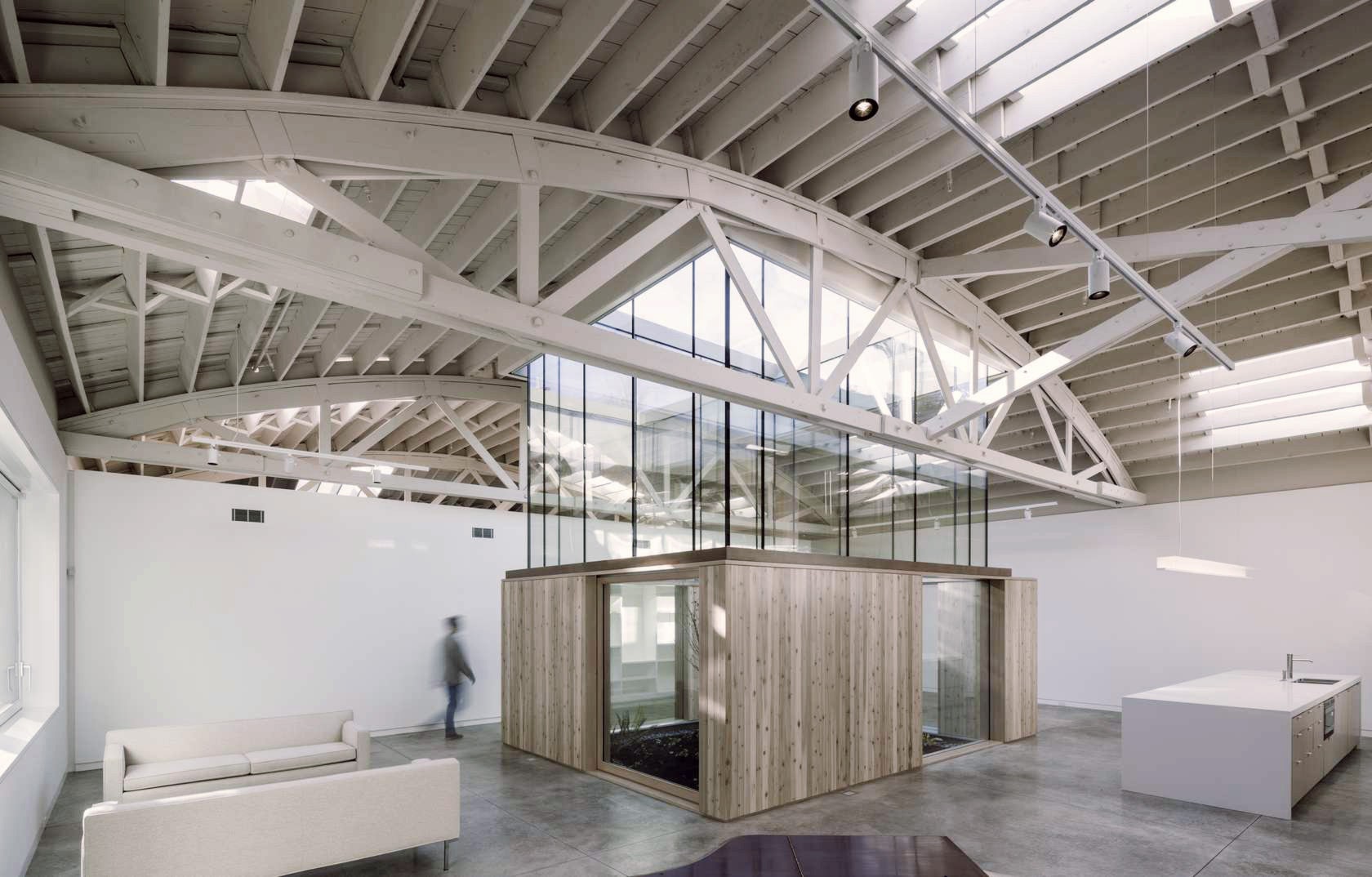Bow trusses were a popular structural system in the early 20th century, especially in America. They consist of an arched beam above and a straight beam below. The engineering feat has historically been popular both for bridges and for industrial architecture such as hangars due to its ability to clear-span large distances.

© Smithbuilt, Inc
This prefabricated bridge by Smithbuilt, Inc., spans 60 feet.
Today, large wooden bowstring trusses are refurbished and left exposed as former industrial spaces are repurposed for other uses. These structures lend themselves to new uses because their spans allow for large skylights and flexible spaces: From coffee shops to offices and even spas, check out these projects that show how to make the most of trusses and their curved ceilings.

Bowstring Truss House by Works Partnership Architecture, Portland, Ore.
A former warehouse and auto repair shop becomes a light-filled home and studio space.

3ality Technica by Fung + Blatt Architects, Inc.
This 1940s film production facility was repurposed as a collaborative workspace, with informal meeting areas scattered through the large, open space.

Santa Monica Animation Studio by Gwynne Pugh Urban Studio, Santa Monica, Calif.
Another 1940s industrial building made into an office space, this building’s new construction plays off the warm wood of the bow truss, allowing the boxlike spaces to fill the factory floor.

© Steve Hall
Intrinsic School by Wheeler Kearns Architects, Chicago
These former lumberyard structures from the early 20th century made the perfect home for the school. 75% of the original structures were used, including the bow trusses.

Voda Spa by WorkPlays Studio*Architecture, West Hollywood, Calif.
A mortuary becomes a retreat for relaxation. The trusses overhead became an organizing system, and allowed for daylighting to be added to the roof.




